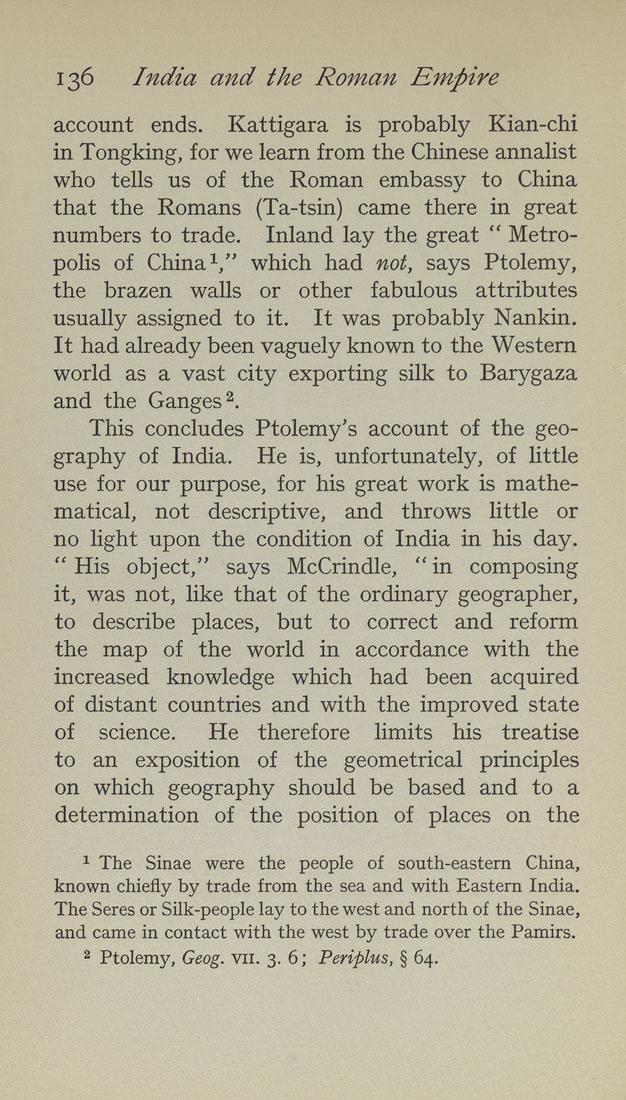136 India and the Roman Empire
account ends. Kattigara is probably Kian-chi
in Tongking, for we learn from the Chinese annalist
who tells us of the Roman embassy to China
that the Romans (Ta-tsin) came there in great
numbers to trade. Inland lay the great " Metro¬
polis of China 1," which had not, says Ptolemy,
the brazen walls or other fabulous attributes
usually assigned to it. It was probably Nankin.
It had already been vaguely known to the Western
world as a vast city exporting silk to Barygaza
and the Ganges^.
This concludes Ptolemy's account of the geo¬
graphy of India. He is, unfortunately, of little
use for our purpose, for his great work is mathe¬
matical, not descriptive, and throws little or
no light upon the condition of India in his day.
" His object," says McCrindle, " in composing
it, was not, like that of the ordinary geographer,
to describe places, but to correct and reform
the map of the world in accordance with the
increased knowledge which had been acquired
of distant countries and with the improved state
of science. He therefore limits his treatise
to an exposition of the geometrical principles
on which geography should be based and to a
determination of the position of places on the
^ The Sinae were the people of south-eastern China,
known chiefly by trade from the sea and with Eastern India.
The Seres or Silk-people lay to the west and north of the Sinae,
and came in contact with the west by trade over the Pamirs.
2 Ptolemy, Geog. vii. 3. 6; Periplus, § 64.
|








